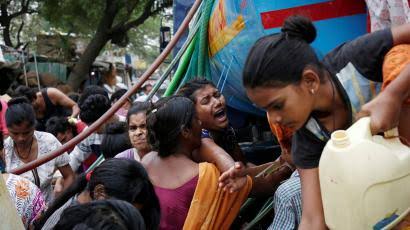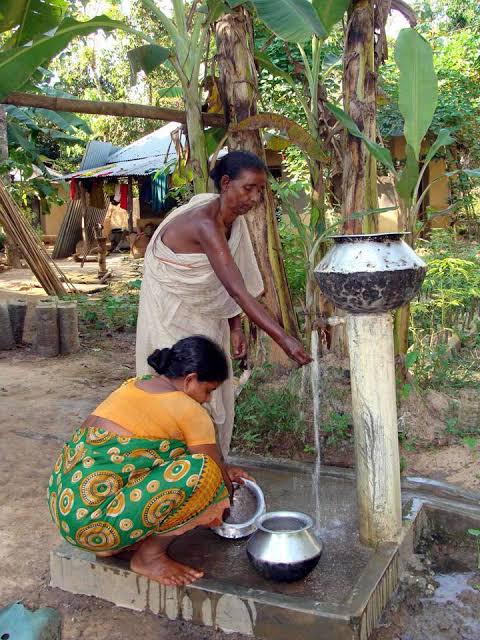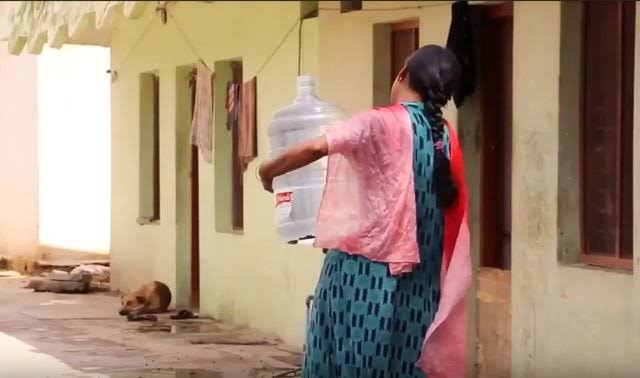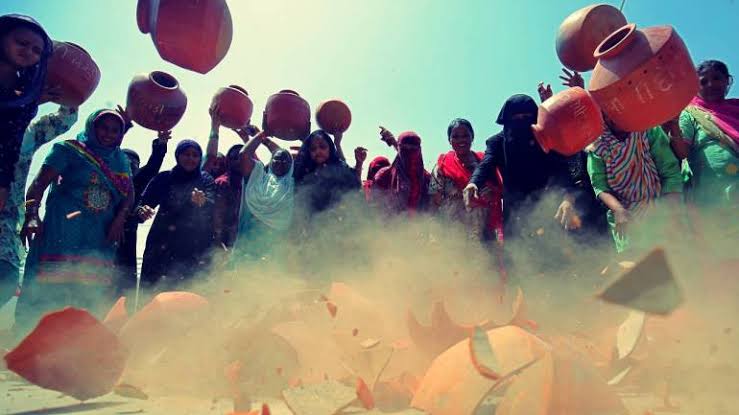Water is essential for human survival and development, but the ongoing water crisis in India, despite 70 years of policy-making is widening the circle of poverty, water-borne diseases, and gender inequality. In this article I reaffirm, that water is essentially a women’s issue. The participation of women, today, is a mere token through the District Water Committees, and the government at all levels has always been in construction mode, thanks to rampant corruption and widespread bureaucratic denial to take water seriously.

With the increasing privatization of water in corporate hands, rural females will henceforth have to bear the maximum amount of burden as the role to provide basic necessities rests with a woman in India and in the entire global south.
With the increasing privatization of water in corporate hands, rural females will henceforth have to bear the maximum amount of burden as the role to provide basic necessities rests with a woman in India and in the entire global south.
Colonial Period
After the British conquest of India, the traditional systems of water collection and distribution were dismantled, and ownership of natural resources and community irrigation was transferred to the colonial polity. British control over surface waters further increased after the 1857 Revolution which led to increased investment in canals and irrigation facilities. After the introduction of common law principles, the rights of landowners to access water was legitimised along with allowing the landowner to take a reasonable portion of the flow of a watercourse. The law also gave unlimited rights to groundwater under the land holding to the owner. Later, with the Government of India Act 1935, water was made a state subject, the states were empowered to take decisions on water supply, irrigation canals, drainage and embankments, water storage and hydro-power.
Post-Independence
After independence, the colonial structure of water regulation has not withered away. Water rights and land rights are still linked. Also, the colonial trend of displacement of tribal and local communities has continued by state agencies. The 1960s was an era of groundwater exploitation irrigation which developed at an explosive rate after the tank irrigation disappeared with focus of Green Revolution promoting, increased canal irrigation, electricity consumption and higher yield. Mihir Shah led a panel in 2015 on water development and said that the water projects in the country have suffered from “build-neglect-rebuild” syndrome, with the irrigation bureaucracy always staying in the construction mode due to vested interests of many. He emphasized on improved management structures and institutional reforms rather than just public investments in water infrastructure.
Today, drinking water and sanitation services to rural areas are traditionally delivered by state agencies, Public Health and Engineering Department or Water Boards, funded through fiscal transfers from the centre. Here, public agency is responsive to the central bureaucracy rather than the beneficiaries, where technology is chosen on the basis of incentives to the professional managers rather than the people.

Water, Poverty and Gender
Even post-reforms, women still neither exercise much power, nor are they able to influence policies or rules of any political game. Reasons for this are seen in obstacles resulting from social norms that are gender specific, as well as from structural properties of water reforms. However, this is not to say that women haven’t gained anything. They have gained public voice, which is an acknowledgement of female capabilities to lead and contribute to the reforming process.
Even post-reforms, women still neither exercise much power, nor are they able to influence policies or rules of any political game. Reasons for this are seen in obstacles resulting from social norms that are gender specific, as well as from structural properties of water reforms.
In urban areas of the industrialized world, well-established arrangements deliver processed water through pipes and faucets to virtually every home and enterprise at costs that are small in comparison to the revenues of most enterprises and to the incomes of all but the poorest households. However in the global south, particularly in rural areas, access to water is generally more problematic and more differentiated. In India access to water is generally achieved if, one owns land and a pump providing access to groundwater or a water course or owns pump and has a connection, also access to electricity or obtains water from river, pond or public tank through some community resources or utilizes government Resources such as municipal tap water, or pumped water in an irrigation project.
In a poor household, gender inequality also interacts with poverty in terms of access to water. To understand how gender and water coincide in such spaces, you can refer to the following:
1. Gender-based divisions of work

In many societies, women have primary responsibility for organizing and undertaking domestic work which includes cooking, cleaning, washing, managing the health of the household, and caring for and raising the children. Hence, females end up putting significant amount of time in securing water for their family’s needs. Young women and girls are kept away from school to collect water. Water collection is a major part of the work of women in rural areas of the global south In the Baroda region of India, women spend 7 hours per week collecting water.
Also read: Is The Water Crisis In India The Beginning Of Climate Breakdown?
2. Patriarchy and Ownership

In a patriarchal society such as India, decision making from state offices, institutions, to family tends to be dominated by men, also, the overwhelming majority of assets, that is, land, factories, are owned or controlled by men. Most often, as men are better represented and their economic priorities are given more consideration than women’s domestic interests. Public investment and collective decision making in water are often in their favour i.e. irrigation trumps domestic water supply.
3. Health

Poverty and the burden to fetch water from long distances, or drinking unsafe water puts poor women at a double disadvantage, often resulting in cases of failed pregnancies, spine twisting, uterus collapse etc. The burden of carrying traditional water pitchers on the hip can cause difficulty during pregnancy and deformity in posture. Hand pumps are also difficult and cumbersome to pump in order to procure groundwater. In instances where a long walk is required to reach the nearest functioning tube well, many families use closer polluted surface water.
4. Class-Caste difference
Class and caste location in rural India differentiate access to domestic water. More prosperous households, which coincide with upper caste families, generally own deep tube wells, providing cleaner water. Wealthier and upper caste women thus have better access to cleaner water than poorer women.

5. Washing Water, Sanitation, and Privacy
Few rural households have closed latrines, but the poor are especially unlikely to have them. They often await nightfall to use the open latrines. In some cyclone and food crises, when privacy is particularly scarce, health scares emerge due to unavailability of proper sanitation.
6. Climate Change
Lowering of groundwater tables creates an important, but largely unreported, conflict over water. In this conflict the dominant, and male-dominated, priority of government, economic growth clashes with lesser priorities of government, health, and domestic water supply, reflecting women’s practical interests.

Image Source: Time
Also read: The Gendered Politics Of Stepwells In India: Space, Water And Religion
Water, hence is a women’s issue and making changes to effectively solve the availability of quality water resources will require adept understanding of the local social mores and dimensions (who does the work, who makes the decisions, how change might exclude women and the poor) of different modes of water access. Since women are so closely connected and affected by water and sanitation, they must be involved in the solution. Let’s recognize what stops us, forge ahead and bring the change!
Indu Gupta is a Junior Research Fellow working on her Doctoral thesis in Political Science. A Delhi University alumni, she has previously done stints with the Embassy of the Kingdom of the Netherlands, New Delhi and Government of Madhya Pradesh, India. She writes actively on Gender, Development and Political issues through her blog on Medium and various publications. She can be reached at induguptaa1994@gmail.com. You can also find her on Facebook and LinkedIn.
Featured Image Source: Money Control




